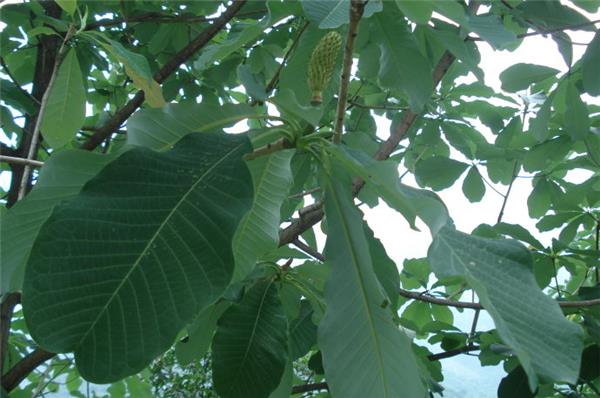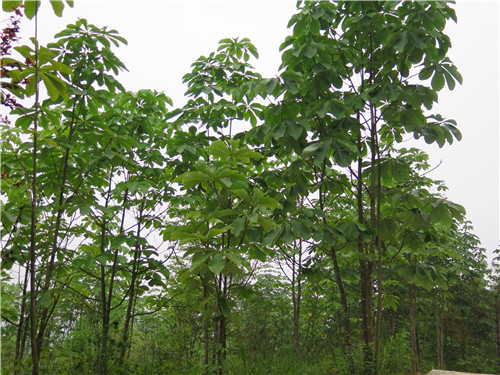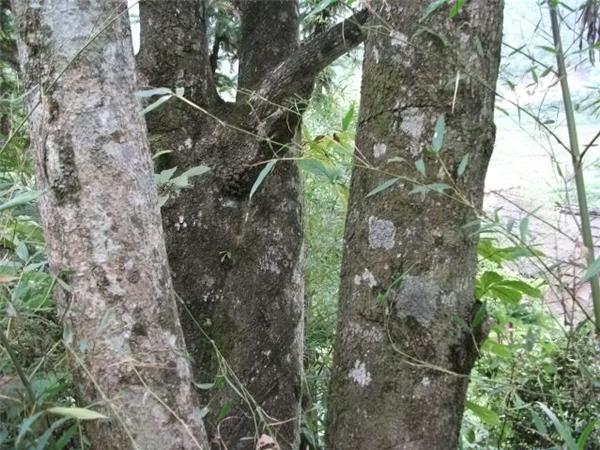What is the knowledge of cultivation and maintenance of Magnolia officinalis
Magnolia officinalis is tall and straight. Although it is a unique tree species in the mountains, it can also be cultivated artificially now. As long as it is properly maintained, it can thrive and grow healthily.

1. Morphological characteristics of Magnolia officinalis.
Deciduous trees, 15 metres high. The trunk is straight, the bark is grayish brown, longitudinally cracked, and the endothelium is purple-brown or dark brown. Terminal bud large, branchlets with annular stipule scars. Simple leaves alternate at the top of branches, oval-Obovate, leaf margin microwave, leaf abaxially hairy and powdery; petiole thicker. Flowers large, white, opening at the same time as leaves, solitary branches apical; perianth 9, 10 pieces, fleshy; stamens numerous, spirally arranged; carpels numerous, spirally arranged on receptacle. Aggregate follicles, Terete-elliptic or ovate-elliptic. Seeds red, triangular-Obovate. The flowering period is from April to May and the fruit ripening period is from October to November.
2. Growth habits of Magnolia officinalis
Due to different types, the requirements for environmental conditions are also different. Magnolia officinalis likes cool and humid climate, and high temperature is not conducive to growth and development, so it is suitable to grow in the mountain area with an elevation of 800m. It is a mountain endemic tree species, cold-tolerant, all positive, but the seedlings are afraid of strong light. It is a slow-growing tree species, the annual seedling height is only 30ml / 40m, and the young tree grows faster. Magnolia officinalis is less than 10 years old and rarely sprouts, and the tree is more than 8 years old to blossom and bear fruit. The germination ability of seeds will be significantly reduced after drying. Low temperature stratification for about 5 days can effectively relieve the dormancy of seeds. The optimum temperature for germination is 20ml / 25℃.

Third, the technology of segmented peeling and regeneration of Magnolia officinalis.
The girdling site: from the base of the trunk, it is defined as the lower cutting line at 20-30cm above the ground. Then the girdling length is determined according to the multiple of the standard length 45cm. There are 4 kinds of girdling length: 45cm, 90cm, 135cm, 180cm.
Circular cutting: first cut into a circular cutting line around the trunk on the upper annular cutting line with a sharp knife, and the knife edge is tilted downward by 45 °when the knife is lowered; on the lower cutting line, it is also cut into a circular cutting line around the tree trunk, and the knife edge is tilted 45 °upward when the knife is lowered. Then cut vertically from top to bottom in the middle of the trunk, and then gently pry up the bark with clean, smooth and thinner pieces of bamboo from the top of the vertical cutting line, and gently tear the bark along the transverse knife mark, cutting off the phloem that connects the xylem.
Peeling and bandaging: 15-18 days after peeling, the lower straps or ropes can be untied first. Make the new skin tissue of the girdled part come into contact with air. But the wrapped plastic film can not be turned up. The bandaged plastic film can be untied after 22-25 days. At this time, the healing tissue has been formed, the wound has healed, the new bark has grown, and the growth has begun to resume.

IV. Control of common diseases and insect pests in Magnolia officinalis
Blight: there are two types of disease: non-infectivity and infectivity. It often occurs in the seedling stage and mostly in the plum rain season. Seedlings spread rapidly after the disease, often causing death in pieces. Commonly used Bordeaux liquid (that is, made of 1 part of copper sulfate, 1 part of quicklime and 100 parts of water), 112 grams per square meter, sprayed once every 10 days or so after the seedlings were unearthed, 4 ~ 5 times in a row, the control effect on the blight was significant.
Leaf blight: shallow cultivated land, poor root growth of young seedlings and trees, poor soil and poor water and fertility conservation, insufficient base fertilizer, dry weather and dense growth of seedlings and forests and other environmental conditions that are not conducive to seedling growth and development can lead to the occurrence of magnolia leaf blight. Remove the diseased leaves in time after the onset of the disease; spray 1-100 Bordeaux solution or 50% acetaminophen 800-fold solution every 7-10 days, spraying 2-3 times continuously, etc.

In addition, the common diseases of Magnolia officinalis include coal pollution, root rot, and pests such as longicorn beetles. After discovering diseases and insect pests, we must immediately remove pathogens and take control measures to avoid further expansion of diseases and insect pests and affect the healthy growth of plants.
- Prev

How to plant Camellia oleifera seedlings can Camellia sinensis be grafted
How to plant Camellia oleifera seedlings can Camellia sinensis be grafted
- Next

The harm of paulownia planthopper control methods of paulownia planthopper
The harm of paulownia planthopper control methods of paulownia planthopper
Related
- Wuhan Hospital Iron Tree Blooming Result Was Instantly Frightened by the Gardener Master
- Which variety of camellia is the most fragrant and best? Which one do you like best?
- What is the small blue coat, the breeding methods and matters needing attention of the succulent plant
- Dormancy time and maintenance management of succulent plants during dormancy
- Minas succulent how to raise, Minas succulent plant pictures
- What are the varieties of winter succulent plants
- How to raise succulent plants in twelve rolls? let's take a look at some experience of breeding twelve rolls.
- Attention should be paid to water control for succulent plants during dormant period (winter and summer)
- Watering experience of twelve rolls of succulent plants
- Techniques for fertilizing succulent plants. An article will let you know how to fertilize succulent plants.

